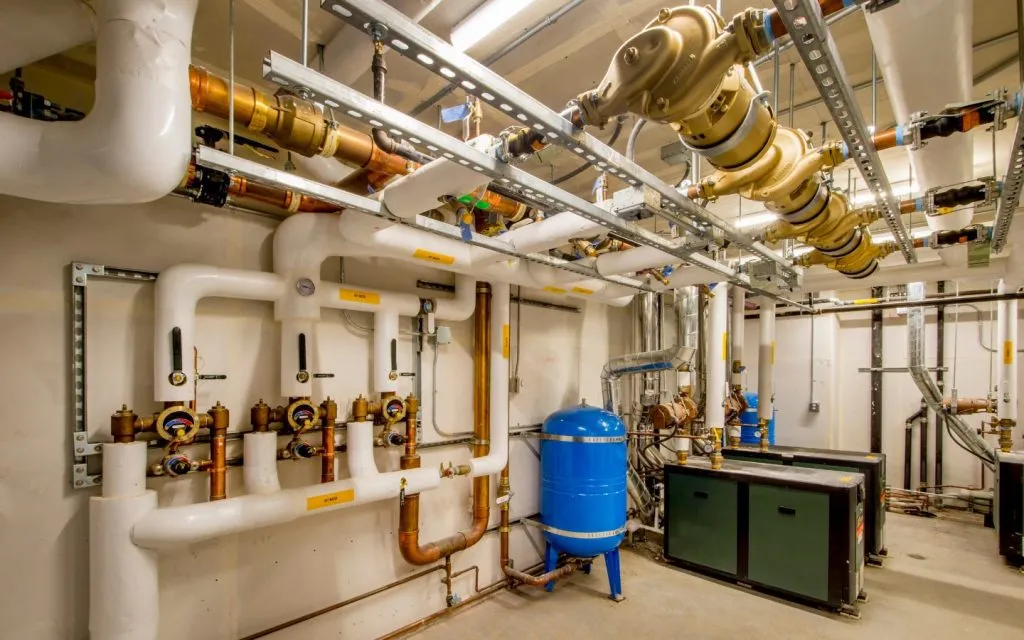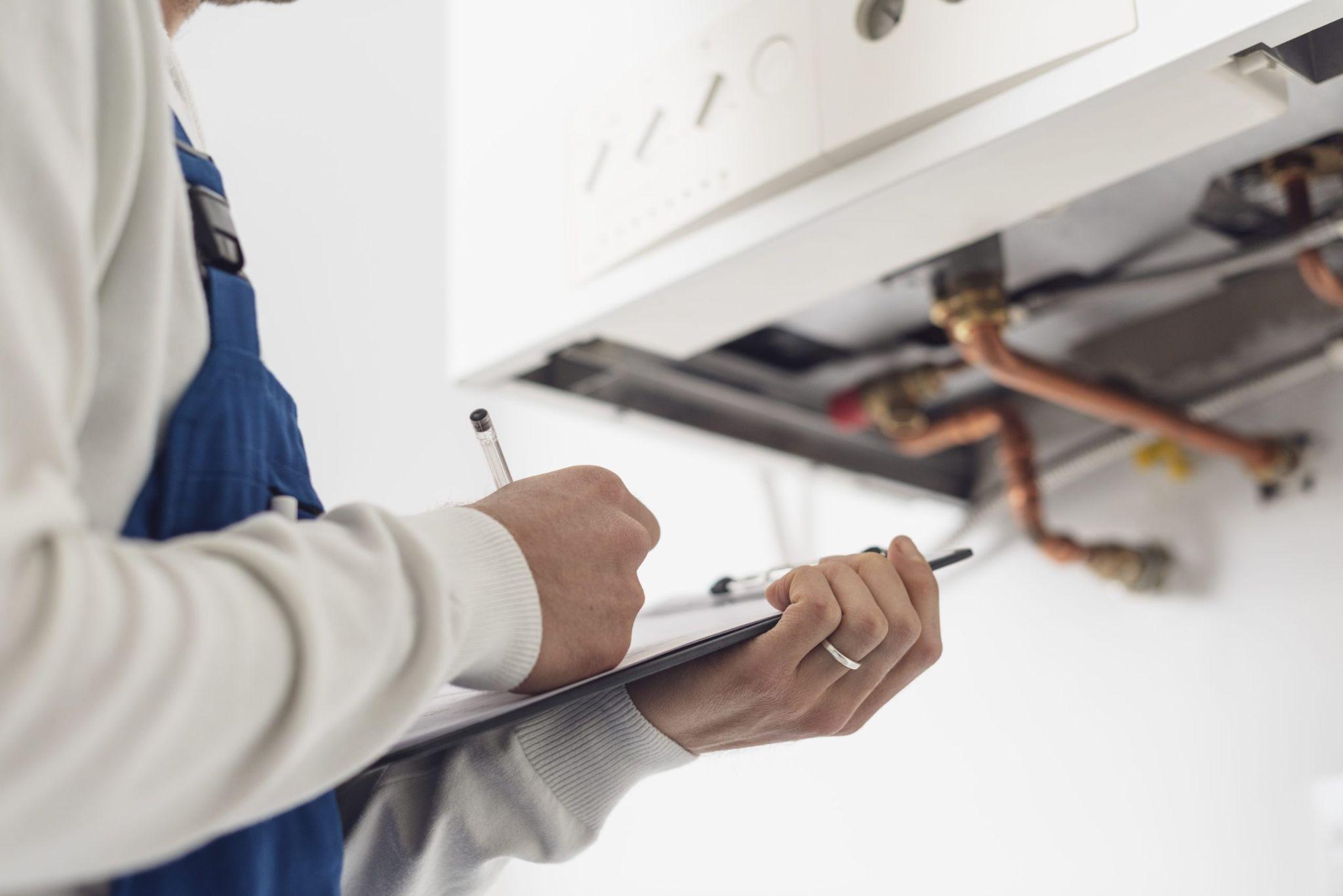Learning
Time-Tested Practices for Superior Water Filtration

Proper filtration is a crucial aspect of providing the highest standard of water quality. A range of time-tested practices can be employed to achieve superior results. This article will provide insights into some of these water filtration practices and how they play a role in enhancing the quality of your water.
Analysis of Filtration
Filtration is a process that separates part or all of the impurities from water. This can be achieved using physical barriers or biological processes. Understanding the concepts, mechanisms, and challenges involved in filtration will enable maximum proficiency.
This process is used in numerous applications to provide safe drinking water, proper wastewater treatment, and even purification for industrial operations. Regardless of the application, the principle remains constant: separating undesirable substances to produce cleaner, safer water.
Filtration Fundamentals
The basic rule underpinning any water filtration system is flow-through. Simply explained, as liquids or gasses pass through a filter medium, particles larger than the media’s pore size are retained on the surface or captured within its structure.
Selecting proper filter media for your application relies on a sound understanding of this fundamental principle. It also necessitates an analysis of specific factors such as workload volume, particle size distribution, and desired outcomes for each filtration phase.
Historical Water Filtration Practices
The practice of filtration precedes modern history, with ancient civilizations developing primitive systems to purify their domestic and communal water supplies. Vestiges from Egyptian tomb paintings show people pouring water from the Nile into bowls containing a resiny substance thought to act as filters.
Understanding historical methods aids contemporary science by showcasing increased efficacy through evolved technology and increased knowledge regarding pathogens and pollutants.
Inclusion of Filtap Australia
One company that has been instrumental in superior filtration is Filtap Australia. They have years of experience in providing quality and reliable water filtration systems. Diving into their work offers a real-life example of superior filtration practices.
You can visit www.filtap.com.au to uncover standard protocols for ensuring clean and safe water in various settings, utilizing resourceful techniques and innovative approaches.
Pore Size Significance
Pore size plays a significant role in determining the effectiveness of a filter. Different materials and pore sizes are required for different contaminants. For instance, viruses are so minor that only specific micro-filters can capture them, while larger pollutants, like sand or rust, can be filtered out by less refined methods.
Thus, understanding particle sizes and matching it up with the correct filter media is paramount to successful filtration.
Filter Material Considerations
Various materials—both natural and synthetic—are used as filtering mediums. These include activated carbon, ceramic, cloth, glass fibers, paper, sand, or plastic resins known as ‘ion exchange’ resins among others. Each material possesses specific properties catering to unique filtration needs.
The material chosen greatly impacts the efficacy of filtration, with the right choice ensuring optimal particle retention and fluidity.
Methods of Filtration
The multitudes of filtration methods available today mainly stem from progressions in technology and science. These include but aren’t limited to gravity filtration, vacuum filtration, cold sterilization (filtration under refrigeration), high-temperature sterilization (autoclave), and cross-flow filtration.
Each method has its strengths and weaknesses, compatibility factors, and varying levels of efficiency. Hence your selection should align with the water quality required for your specific application.
Particle Retention Advancements
Over time, significant advancements have been made in improving particle retention. This refers to the filter’s ability to trap and hold particles of a certain size. Finer meshes and layers of filtration materials have enhanced the process of particle retention and elimination of smaller contaminants.
Advancements also include improved processes, such as back-washing or automatic self-cleaning systems, which efficiently clear accumulated particles without disrupting the filtration process.
Maintenance and Performance
Regular maintenance is vital to an effective filtration system. Timely filter replacement prevents contaminant breakthrough and bacterial growth. However, clean water requires more than filtration alone.
Proper sanitation of transport and storage tanks is also critical to prevent re contamination of treated water. A comprehensive maintenance program encompassing filtration infrastructure and hygienic tanks is key to optimizing performance and assuring delivery of safe, high quality water.
Filtration Equipment Types
There are various types of filtration equipment available, each designed for specific uses and applications. The selection often depends on factors like the volume and type of water treated, and the desired level of purity.
The common types include sieve filters, depth filters, surface filters, and cartridge filters. More specialized ones include activated carbon filters, reverse osmosis systems, or nano-filtration setups – impressive feats of engineering designed to tackle precise filtration tasks.
Industry Filtration Standards
A variety of standards are set by different territories to regulate water quality. For instance, in America, the EPA has specific guidelines covering contaminants like lead, copper, cryptosporidium etc. In Europe, it’s the European Drinking Water Directive.
Understanding these standards aids in choosing appropriate filtration techniques to meet or surpass regulatory requirements.
Importance of Filtration Efficiency
As water scarcity continues to escalate, maximizing filtration efficiency becomes crucial. A highly efficient filter should effectively remove pollutants, use energy wisely, and minimize water wastage. All this while providing a consistently high-quality filtrate.
Technologies such as smart monitoring systems will also play an essential role in improving efficiency by enabling real-time monitoring and immediate fault detection.
Crossflow Filtration Benefits
Crossflow filtration is an innovative approach that sets itself apart from traditional methods. With a semi-permeable membrane, it pushes the dirty water parallel to the filter surface. It provides two main benefits: enhanced purification results and reduced filter-clogging risks.
This method has seen increased implementation in sectors like dairy, wine production, or pharmaceuticals due to the improved consistency of results it provides.
Filtration Application Areas
Professionals such as Filtap are providing water filtration solutions for a wide range of applications with tailored solutions needed for each. This doesn’t just cover potable water provision or sewage treatment but extends into food & beverage processing, industrial sector water recycling, medical devices sterilization and more.
These applications have diverse specifications driving the need for specialized filtration methods across them.
Modern Filtration Technologies
As technology proceeds, new possibilities emerge for effective filtration. Some of the latest trends involve the use of sustainable materials like graphene oxide membranes or bio-inspired filters. Techniques like forward osmosis, nanofiltration, or UV radiation are gaining traction too.
Such advancements are shattering pre-conceived performance boundaries and enabling people to tackle previously formidable contaminants.
Filtration Challenges and Solutions
Water outages caused by climate events, infrastructure failures, or other causes exacerbate existing water filtration challenges. With population growth and emerging contaminants already straining systems to provide clean, safe water, disruptions in service create acute crises. Though water outages spark unique purification hurdles, they also highlight opportunities.
Creating small-scale water filtration tools for household use during disruptions builds resilience. Innovative storage and distribution methods also mitigate outage impacts on communities. With advanced, flexible systems resilient to outages, systemic water issues for people relying on these essential services can be addressed.
Future of Filtration Practices
The future of water filtration is promising and involves further integration of technology into practice, development of renewable filter materials and potency improvement. Emerging fields like machine learning could soon revolutionize filter maintenance, predictive failure modeling or quality control.
By embracing the forthcoming advancements and perpetuating a commitment to excellence, the industry can continue to heighten filtration practices even further.
Summing it Up
Superior filtration practices hold the key to providing safe drinking water and safeguarding the environment. It calls for in-depth understanding, proper maintenance routines and acute standards implementations.
Emerging technologies will continuously redefine this field, handing you more potent tools in the process. And with that continual evolution comes an ever-increasing demand for informed discourse – such as what we’ve explored here – on best filtration practices.
Learning
First-Time Buyer’s Guide to the UK Property Market

Entering the UK property market as a first-time buyer can feel both exciting and daunting. The process is filled with potential pitfalls and complex decisions, but with the right guidance, it can be navigated smoothly. The estate agents in Yorkshire demystify the journey from the initial decision to buy a home to the moment you step over the threshold of your new property.
Understanding Your Financial Position
The first and perhaps most crucial step in the home-buying process is understanding your financial situation. This includes assessing your savings, income, and current debts. Here’s how you can prepare:
1. Deposit: Generally, you’ll need at least 5% of the property price as a deposit, though aiming for 10% or more can provide better mortgage rates.
2. Income and Expenses: Use a budget planner to assess your monthly income against your expenses. This will help you understand how much you can afford in monthly mortgage repayments.
3. Credit Score: Lenders will evaluate your credit score to determine your mortgage eligibility. So it’s important to have a good credit score, and you should work on it if required.
4. Mortgage Options: Speak to a mortgage advisor to understand different types of mortgages, such as fixed-rate, variable-rate, and help-to-buy schemes.
Getting a Mortgage Agreement in Principle
A Mortgage Agreement in Principle (AIP) is a statement from a lender indicating how much they’ll likely lend you. You will be a more attractive buyer with an AIP as it shows sellers you’re serious and financially prepared.
Deciding What You Want
Before you start viewing properties, it’s essential to know what you’re looking for. Consider the following factors:
1. Location: Proximity to work, schools, public transport, and amenities are key. Research neighbourhoods to find the best fit for your lifestyle.
2. Property Type: Decide whether you want a flat, terraced house, semi-detached, or detached property. Each has its pros and cons.
3. Must-Haves: Make a list of non-negotiables, such as the number of bedrooms, garden size, and parking facilities.
4. Future Proofing: Consider your future needs. Are you planning to start a family? Do you need space for a home office?
Starting the Property Search
With a clear idea of what you’re looking for, you can begin your property search. Here are some tips:
1. Use Online Portals: Websites like Rightmove, Zoopla, and OnTheMarket are excellent starting points. Set up alerts to get notified of new listings that meet your criteria.
2. Visit Estate Agents: Register with local estate agents who can provide insights into the market and inform you of new properties before they’re listed online.
3. Attend Viewings: Don’t rush this part. Visit several properties to get a feel for what’s available in your price range.
Making an Offer
Once you find a property you love, it’s time to make an offer. Here’s how to approach it:
1. Research: Check the selling prices of similar properties in the area to gauge a fair offer.
2. Negotiate: Don’t be afraid to negotiate. The starting point is most usually the asking price.
3. Conditions: You might include conditions in your offer, such as the inclusion of certain fixtures or a specific moving date.
The Legal Process
If your offer is accepted, the legal process begins. You’ll need a solicitor or licensed conveyancer to handle the legalities. Here’s what to expect:
1. Conveyancing: This is the legal transfer of property ownership. Your solicitor will handle this, including conducting searches, dealing with the Land Registry, and transferring the funds.
2. Surveys and Inspections: Arrange for a property survey to check for structural issues. There are different types of surveys, from basic condition reports to full structural surveys.
3. Mortgage Finalisation: Once the survey is complete and satisfactory, your mortgage can be finalised.
4. Exchange of Contracts: This is when the sale becomes legally binding. You’ll pay your deposit at this stage.
5. Completion: On the agreed completion date, the remaining money is transferred, and you receive the keys to your new home.
Moving In
Moving day can be hectic, but planning can ease the stress:
1. Hire a Removal Company: Book a reliable removal company well in advance. Discover the best deals by getting quotes from multiple companies.
2. Pack Strategically: Label your boxes by room and keep essential items accessible.
3. Notify Utilities and Change Address: Inform your utility providers of your move date and update your address with banks, the DVLA, and other important institutions.
Settling In
Get settled. Introduce yourself to the neighbours, familiarise yourself with the local area, and really start to make the place your own.
Here are a few final tips:
1. Safety Checks: Make sure that your smoke alarms and carbon monoxide detectors are working, and make sure that you know where the gas and electricity meters are located.
2. Maintenance Plan: Keep a record of the smooth functioning of your new home with a maintenance schedule, complete with regular checks and seasonal tasks.
3. Personal Touches: Add personal touches to make the space feel like home. This can be from putting up family photos or redoing the decoration in your rooms.
Conclusion
Buying your very first home in the UK is most definitely a milestone, difficult and full of challenges but rewarding in the end. Such a philosophy guides you in understanding finances and knowing what you want to achieve from detailed research, and seeking professional advice that confidently helps you navigate the property market. Yes, the journey may have its hurdles, but in the end—owning your own home—the reward will be worth the effort. Welcome to your new chapter!
SEE ALSO: Conquer the Chaos: Hacks to Clean Your Home in Half the Time
Learning
5 Health Benefits of Regular Pedicures

There’s nothing quite like a pedicure to keep your feet looking and feeling their best, but did you know that pedicures do more than simply enhance the appearance of your feet? Many people don’t realize that regular pedicures can come with a wide range of health benefits that can promote the well-being of your feet, so here are some ways that your routine pedicure keeps both your toenails and feet in the best condition possible!
Smoother Skin
One of the biggest misconceptions about pedicures is that they only cater to and look after your toenails. While you’ll definitely be leaving each session with a fresh coat of nail polish, your pedicure can also do wonders for the health of your skin. Aside from trimming and shaping your nails and cuticles, you’ll notice that your nail technician also dedicates a few steps to the skin of your feet.
After inspecting your feet and looking for any issues or imperfections that may need to be addressed, your technician will work on an exfoliating scrub to remove any dead skin cells. This step may also be aided by a foot file, which can be used to buff away any calluses and other problem areas manually.
Softer Skin
After your nail technician addresses all the problem areas of your feet and removes any unwanted dead skin cells, he or she will often massage in a moisturizing product, such as lotion, cream, or butter, to ensure that your skin is properly moisturized. These products contain skin-loving ingredients that will ensure that your feet have everything they need to look and feel their best so that you can walk out of your pedicure with a renewed sense of confidence.
Healthier Nails
After your pedicure session, your nails will not only look better due to the fresh coat of nail polish, but they’ll also be healthier and stronger. This is because your nail technician takes their time to ensure that your nails are properly looked after through steps that include deep cleaning, nail trimming, nail filing, and cuticle care. All of these things work together to prevent issues like ingrown nails from occurring, all the while improving the appearance of your nails.
Increased Blood Circulation
While the specific steps included in your pedicure will depend on the beauty salon, most pedicures will have a massage step somewhere in the mix. One of the often overlooked benefits of these massages is the increased blood circulation, which can deliver more nutrients and oxygen to your feet and nails, promoting their health and appearance. Aside from that, better blood flow means reduced tension and soreness, as well as better distributed heat throughout your body.
Reduced Infections
A significant amount of dirt and bacteria can build up on your feet without you even realizing it, but pedicures can be a great way to prevent these from happening in the first place. The exfoliation step of a pedicure removes dead skin cells as well as all the debris that may have accumulated underneath, and the deep cleaning of your toenails and cuticles also gets rid of any impurities that may have slipped beneath them, which can stop infections from happening.
These are some of the many health benefits that you can look forward to at your next pedicure appointment. However, it’s worth noting that you need to book regular sessions to truly reap all the rewards. This can be difficult, especially when you don’t feel like driving to your nearest nail salon after a long day, but the good news is that you can enjoy the salon experience in the comfort of your own home with a home pedicure service.
Learning
Commercial Boiler Installation Services London

For businesses in the bustling city of London, having a reliable heating system is crucial. Whether you’re opening a new office, expanding your current premises, or simply upgrading an outdated system, commercial boiler installation services for businesses in London are essential to ensure your operations run smoothly and efficiently. Proper installation and maintenance of commercial boilers can make a significant difference in energy efficiency, cost savings, and the overall comfort of your workspace.
The Importance of Professional Installation
When it comes to installing a commercial boiler, professional expertise is paramount. Here’s why:
- Efficiency and Performance: Professional installation ensures that your boiler operates at peak efficiency, reducing energy consumption and lowering utility bills. A well-installed boiler can effectively meet the heating demands of your business without unnecessary energy waste.
- Safety: Commercial boilers are complex systems that require precise installation to operate safely. Professional installers adhere to stringent safety standards and regulations, minimizing the risk of accidents and ensuring the safety of your employees and premises.
- Compliance with Regulations: Commercial properties are subject to various building codes and regulations. Professional installers are well-versed in these requirements and ensure that your boiler system complies with all local laws and standards.
- Longevity and Reliability: Proper installation is critical to the longevity and reliability of your boiler. A professional installation can prevent common issues such as leaks, pressure problems, and system failures, ensuring that your boiler runs smoothly for years to come.
Key Considerations for Commercial Boiler Installation
When planning for a commercial boiler installation, several factors need to be considered:
- Type of Boiler: The type of boiler you choose will depend on your business’s specific needs. Options include gas boilers, oil boilers, and electric boilers, each with its own set of advantages. Consulting with a professional can help you determine the best choice for your business.
- Sizing and Capacity: The boiler’s size and capacity must match the heating demands of your commercial space. An undersized boiler will struggle to meet your needs, while an oversized one will lead to inefficiencies and higher costs.
- Location: The placement of your boiler affects its efficiency and accessibility for maintenance. Professional installers can help you choose the optimal location for your boiler.
- Integration with Existing Systems: If you’re upgrading or replacing an existing boiler, it’s essential to ensure compatibility with your current heating system. Professional installers can seamlessly integrate the new boiler with your existing setup.
Choosing the Right Installation Service

Selecting the right installation service provider is crucial to the success of your boiler installation project. Consider the following when making your choice:
- Experience and Expertise: Look for a provider with a proven track record in commercial boiler installations. Experienced installers can handle the complexities of commercial systems and provide high-quality workmanship.
- Reputation: Check reviews and testimonials from previous clients to gauge the provider’s reliability and customer satisfaction.
- Comprehensive Services: Choose a provider that offers a full range of services, including installation, maintenance, and repair. This ensures that all your boiler needs are met by a single, trusted source.
In London, ROWLEN is a reputable name known for delivering top-notch commercial boiler installation services. Their team of experts is dedicated to providing efficient, safe, and compliant installations tailored to the unique needs of businesses.
Conclusion
Investing in professional commercial boiler installation services for businesses in London is essential for ensuring efficiency, safety, and long-term reliability. By choosing an experienced and reputable service provider like ROWLEN, you can rest assured that your heating system will be installed correctly and maintained to the highest standards. Proper installation not only enhances the performance of your boiler but also contributes to the overall comfort and productivity of your business environment.
SEE ALSO:
-

 News3 years ago
News3 years agoLet’s Know About Ultra High Net Worth Individual
-
Entertainment1 year ago
Mabelle Prior: The Voice of Hope, Resilience, and Diversity Inspiring Generations
-

 Health3 years ago
Health3 years agoHow Much Ivermectin Should You Take?
-

 Tech2 years ago
Tech2 years agoTop Forex Brokers of 2023: Reviews and Analysis for Successful Trading
-

 Lifestyles2 years ago
Lifestyles2 years agoAries Soulmate Signs
-

 Health2 years ago
Health2 years agoCan I Buy Ivermectin Without A Prescription in the USA?
-

 Movies2 years ago
Movies2 years agoWhat Should I Do If Disney Plus Keeps Logging Me Out of TV?
-

 Learning2 years ago
Learning2 years agoVirtual Numbers: What Are They For?
